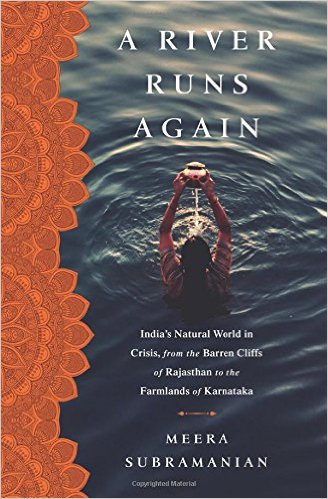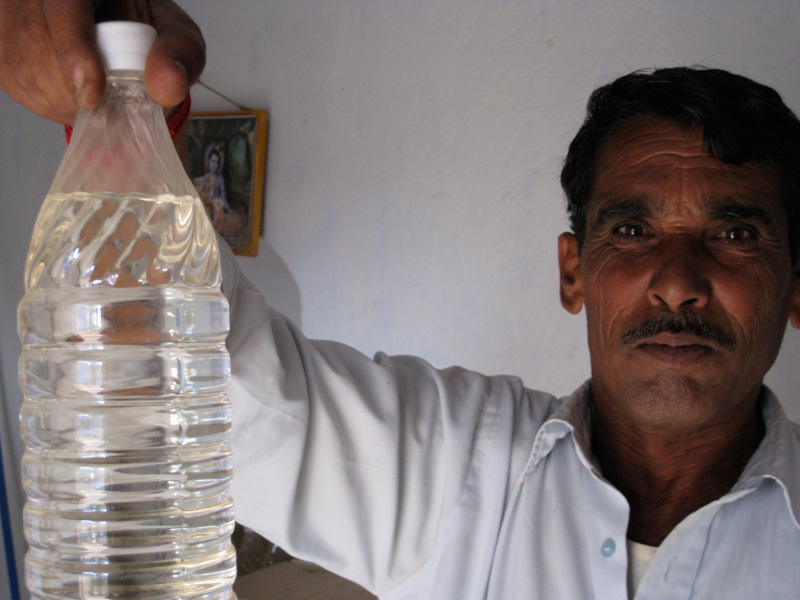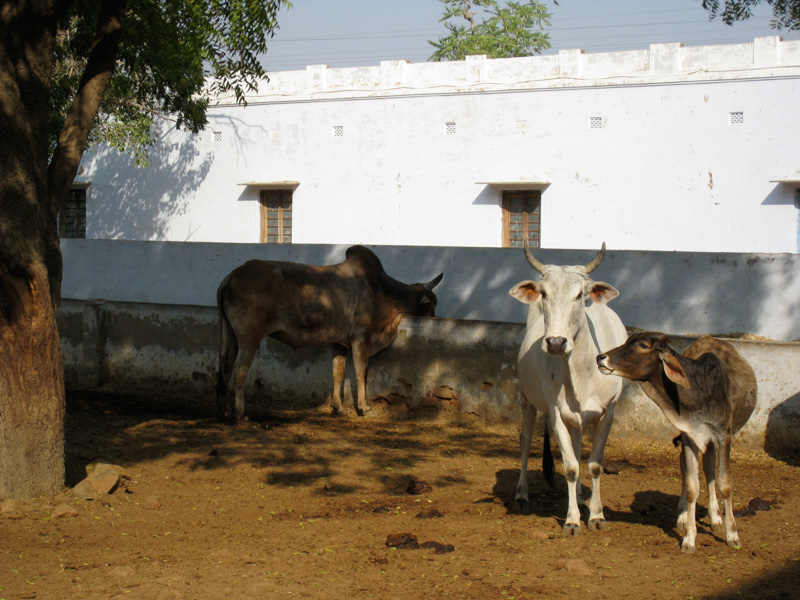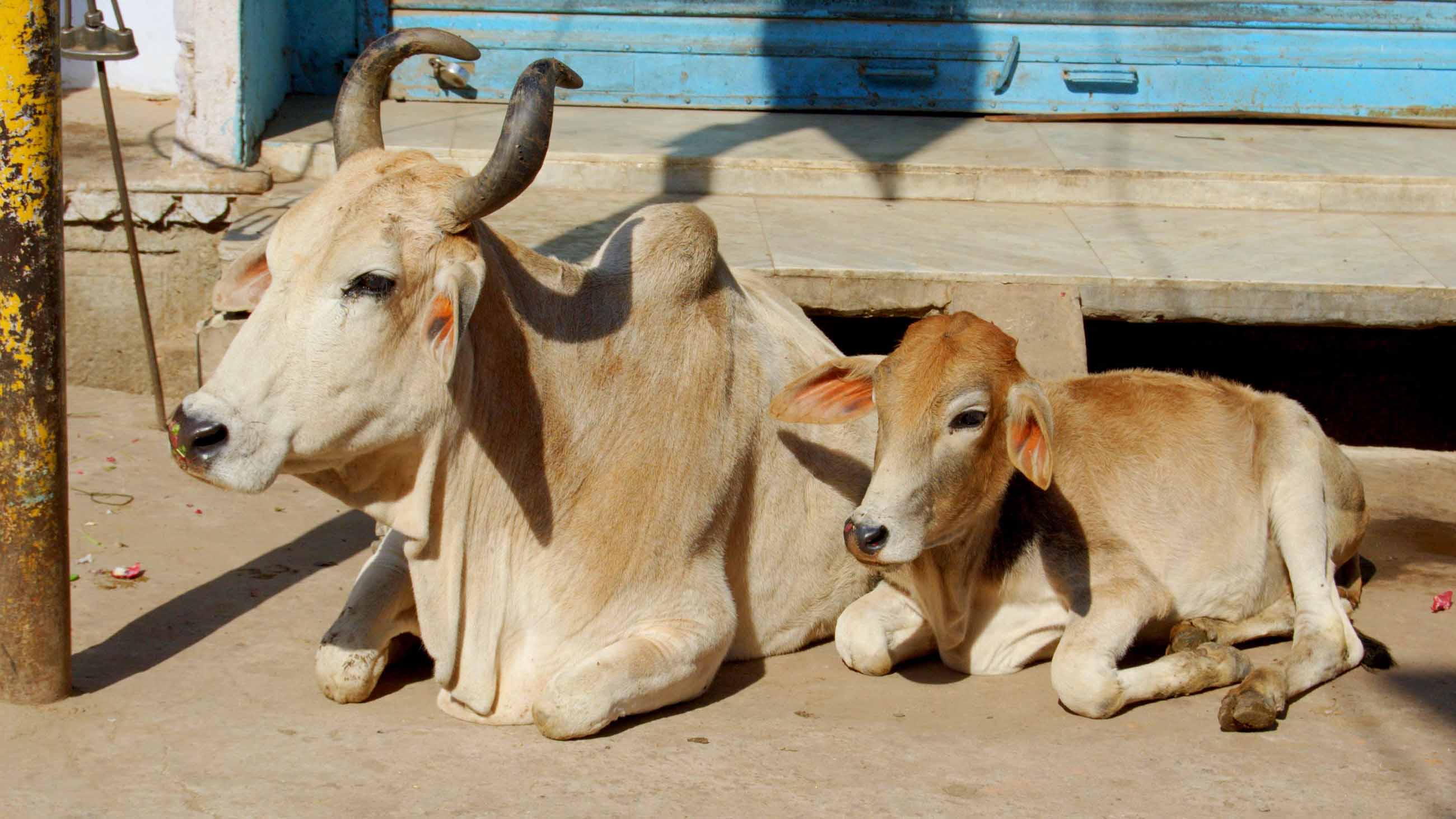India is home to nearly 200 million cattle, keeping twice the number that America has on just a third of the amount of land. There are bulls that draw plows and cows that produce milk and strays that munch up garbage. To many of the Hindus of the subcontinent, each and every one of these ruminants is holy, from its mere existence down to its bodily excretions. So when the animals age beyond usefulness, they retire to what are known as pinjrapoles or gaushalas — cow shelters that I’d often heard referred to as old-age homes for cows.

WHAT I LEFT OUT is a recurring feature in which book authors are invited to share anecdotes and narratives that, for whatever reason, did not make it into their final manuscripts. In this installment, writer Meera Subramanian shares a story that didn’t make it into her book, “A River Runs Again: India’s Natural World in Crisis, from the Barren Cliffs of Rajasthan to the Farmlands of Karnataka.”
Back in 2009, I was traveling across the vast northwestern state of Rajasthan looking for cows because I was on the vanishing trail of vultures, birds that once flew over South Asia by the millions, until their sudden and catastrophic collapse. The cause was the veterinary use of a common NSAID painkiller, diclofenac, which farmers became fond of giving to their cows in the 1990s. If the animal died with the drug in its system, the scavenging vultures that cleaned up the carcass suffered mortal kidney failure. It was a freakish fluke of biology converging with a unique blend of animal husbandry in a land where a fallen cow is not considered food for humans. The circumstances led to the near disappearance of South Asia’s scavengers in less than a decade.
But cows — the dead and the living — remained. I sought out the pinjrapole to see what became of the animals that died there. Were they given diclofenac in their last dying days? Did they attract vultures to feed? Could they too have been contributing to vulture deaths? I would find out this — and so much more — in Fatehpur, located in a sparse stretch of Rajasthani desert. With my driver serving as my translator, we walked in unannounced one sunny fall afternoon.
We were met by Jagdi Singh Rathore, the site’s watchman for 10 years. Within the first few minutes I learned that they cremated their cows, so my initial questions were answered, but Rathore was excited to show us around so we followed him in. His face was etched with the creases of someone who has lived for decades as a desert dweller. His hair was black, his clothes — button-down shirt and khakis — a cooling white. His right wrist was looped with the red thread of a Hindu. He led us through the courtyard where dozens of hooved retirees were standing in the shade of acacia trees, or feeding at a long trough, abundantly filled with grain. We passed through a gate so he could show us green pastures where precious water irrigated a high-protein crop for the animals. It wasn’t a bad life for a bovine, I thought.
But so often had I heard the term “old age” used in describing pinjrapoles that I was surprised by the number of young cows I saw. There were a few obviously old creatures, and one Brahma with a tumor on its side as big as the hump on its back, but many seemed young and healthy. A good many had calves in tow. I was perplexed.
There was more to see, Rathore urged, leading us into a separate enclosure where a dozen or so creamy cows stood in the sand, their heads swinging toward us in unison like weathervanes as we entered. These, he explained — and here my translator stumbled a little before settling on the word — were “unmarried” cows.
Ah, virgins. Sometimes they are loaned out to temples, to give and receive blessings, Rathore continued, as he swung open a heavy wooden door and led us into a small, stark room. He stopped and pointed excitedly to a stainless steel apparatus with a large capped pot, pipes angling down from its peak, draining into a five-gallon jug. Judging by Rathore’s demeanor, we seemed to have come to the highlight of the tour.
My first thought was milk, but Rathore proudly exclaimed, “Urine!” I realized I was looking at a distillery as he reached down to pick up a bottle filled with clear liquid from one of many clustered on the floor. He held it up toward me, he and the bottle aglow with light streaming in from the open door.
Gomutra is the name in Sanskrit. Distilled cow urine, especially from young white virgin cows, has a long history in the traditional Hindu system of medicine known as Ayurveda, or “science of life.” Other men had gathered around us and they began calling out the problems that this Ayurvedic cure-all could fix: AIDS, diabetes, liver and kidney cancer, skin problems, bad breath, fever in boys! Just a couple of drops in the morning — along with a pill, someone added — and you will get better. When I asked how they collected it, they all gestured to a red bucket sitting by the door, and I gathered that there was some peon whose job was to watch the cows attentively, bucket in hand, and sprint out to capture the magical therapeutic fluid before it seeped into the desert sand.


But this pee can be political, too. Hindu veneration of cows has taken a dark turn in recent years as the Hindu Right has gained a stronger sway over life in India. The cow has become an inviolable symbol of Hindu nationalism. Under the leadership of Prime Minister Narendra Modi and the Bharatiya Janata Party, both with close ties to the Hindu nationalist organization Rashtriya Swayamsevak Sangh, the trend has strengthened. There has been an increase in vigilante groups attacking people accused of slaughtering a cow, an illegal act in parts of India. Some have acted with near impunity, the alleged crime of eating beef treated as a graver breach of justice than beating a man to death with his wife’s sewing machine in front of her eyes.
Science, too, has suffered under the new regime. In the name of nationalistic pride, Hindu belief systems are vaulted, even when adherents make outlandish claims. A presenter at the Indian Science Congress in 2014, a revered gathering attended by Nobel laureates, has been quoted as describing how ancient Hindu technology created airplanes that flew through the skies of Vedic times, thousands of years ago, even reaching other planets.
It’s in this context that the potential healing powers of cow urine need to be scrutinized. A handful of studies are passing the academic rigor of at least some peer-reviewed journals, but the research is limited. It is being conducted almost exclusively by Indians, and their findings are rarely published in Western journals, instead finding a home in publications from Iran and China. Three studies alone come from Biomedical and Environmental Sciences, a peer-reviewed journal jointly established by the Chinese Center for Disease Control and Prevention and Coulston International Corporation, a U.S.-based chemical company.
The first study found antioxidants in distilled cow urine that might protect white blood cells from gene-altering antibiotics. A second study reported that the liquid had “strong antigenotoxic and anticlastogenic properties,” potentially limiting damage to DNA and chromosomes from industrial chemicals. And a third found that it could protect the liver, possibly because of its antioxidants. Elsewhere, researchers published in the less rigorous Indian Journal of Veterinary Sciences & Biotechnology that it raised immune response in chicks, and in the Journal of Intercultural Ethnopharmacology that it sped up the healing of wounds in rats.
A U.S. patent claims cow urine distillate is a bio-enhancer, increasing the antimicrobial effectiveness of antibiotics, and that is just one of more than a dozen patents on the substance’s medicinal value that India holds around the world. Scientifically speaking, this small body of literature is suspect, providing only a hint that the healing claims the men were calling out to me with such passion have any serious bearing on human biology.
Rathore didn’t offer me a bottle, or even a taste of the elixir he dangled in front of me that day. But if I want, I can head to an Indian market and seek out the substance myself. It is currently being popularized in the form of Goloka Pay and Gomutra Ark, soft drinks made partly with cow urine. (One magazine headline dubbed the drinks “Cow-ka Cola.”)
As cows around India continue to wantonly spill their golden excretions each day, scientific research, as well as marketing and patenting efforts on the value of their urine proceed. It’s a fine time to remember that scientific knowledge does not exist in a vacuum. What scientists choose to study is influenced by the time and place of their inquiries, the funding sources they have available, and the desires of what they hope to find. Even with the most rigorous application of the scientific method, those discoveries along with their implications exist within cultural, economic, religious and political contexts.
That predatory journals of highly questionable provenance are proliferating in India, as a 2013 sting operation by Science revealed, adds another worrisome layer to those seeking accurate knowledge about any scientific subject arising in India. When an academic paper titled “Protective effect of distillate and redistillate of cow’s urine in human polymorphonuclear leukocytes challenged with established genotoxic chemicals” includes in the abstract, “In Veda, cow’s urine was compared to the nectar,” primary sources become a questionable starting point.
Meera Subramanian is an award-winning journalist whose writing has been featured by The New York Times, The Wall Street Journal, Vice News, Nature, and Salon, among other publications. She is currently a Knight Science Journalism fellow at MIT.











Comments are automatically closed one year after article publication. Archived comments are below.
The analysis is weak and has no due reasonability. Do not get me wrong. You can use a Marxian method to categorically add 2 statements without antithetical relationship duly established. The Cow urine article you have mentioned is from a Journal indexed in Web of Sciences. So protest, write a mail to Web of Sciences and propose claims why you wish the Journal must be removed.
Also, not all journals do that. There are wholesome of predatory journals from all over the world and not just India. That is a big issue. But your analogy of making this shows you have poor sense of cognitive dissonance. Do not get offended.
Also, terming a government in India as Hindu nationalist, without any reasonable criterion is not appropriate: the Modi Government is conservative, and lynchings have a big issue: they must never be given a humiliatory tone nevertheless. Making it a Hindu-Muslim issue shows your curiosity.
Like you – Western scholars always assumed Saudi Arabia and Iran have Shia-Sunni problems, and equated the Middle East issues in Syria and Lebanon like Shia-Sunni maths, which proved to be wrong. It was not a cultural issue – it was an economic and power tussle between leaders. So better have a balanced ideology of writing. You may have been accredited and all of that, and I appreciate your status, but this is quite misleading as in issues of the global polity, you need to have a purpose of what issues really are.
It is a big shame from your side. Sorry.